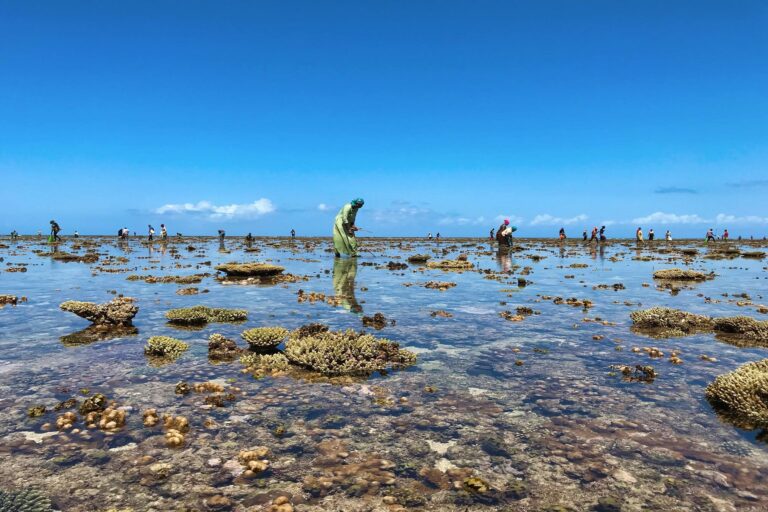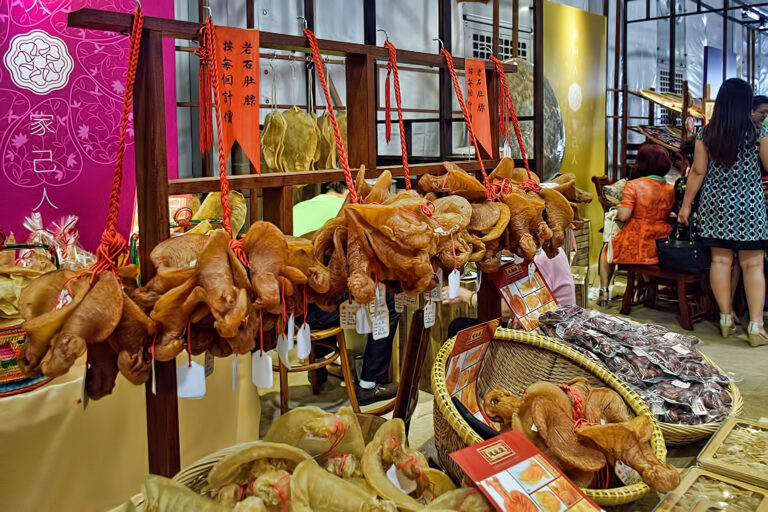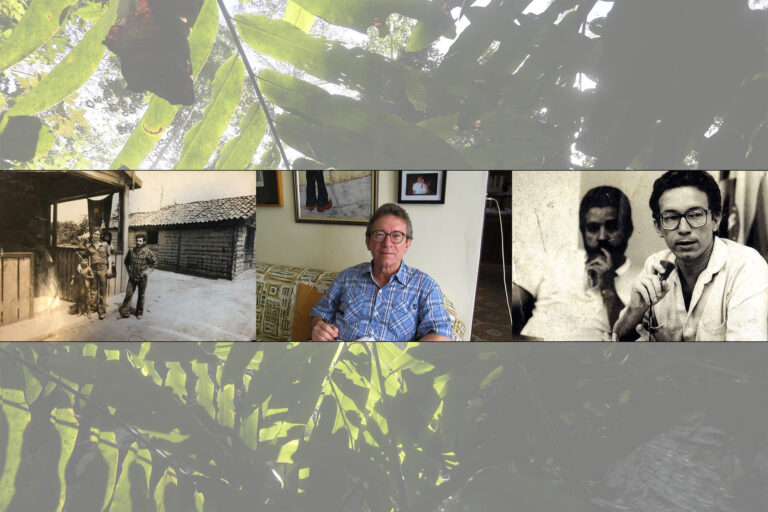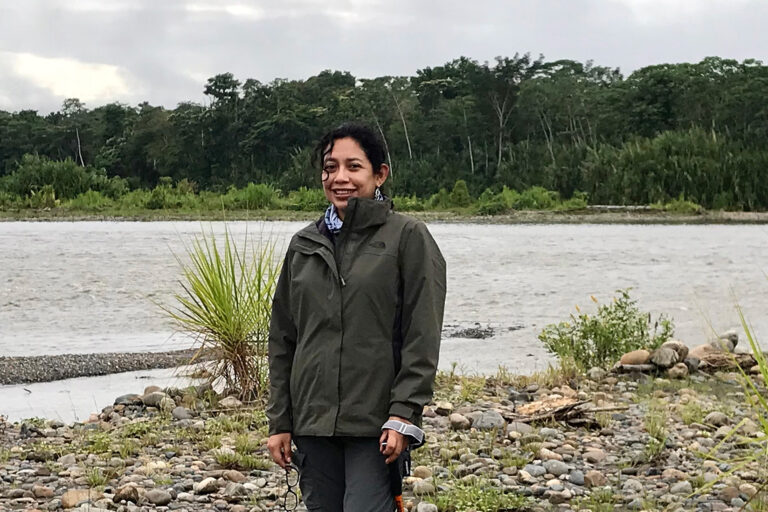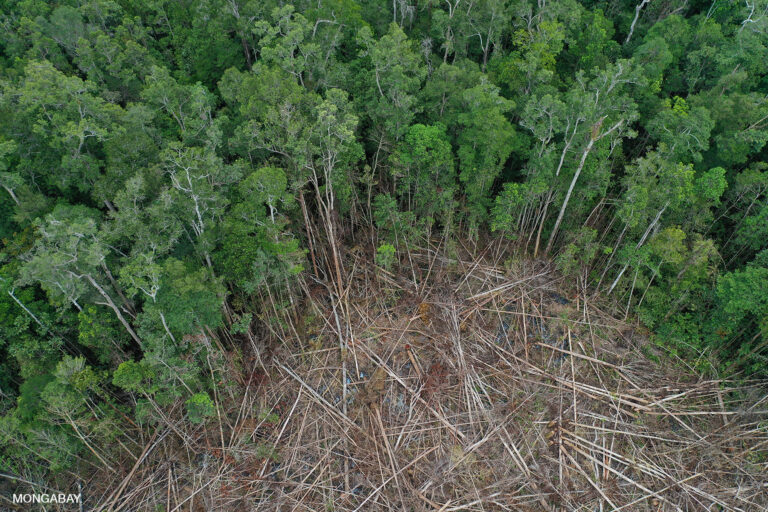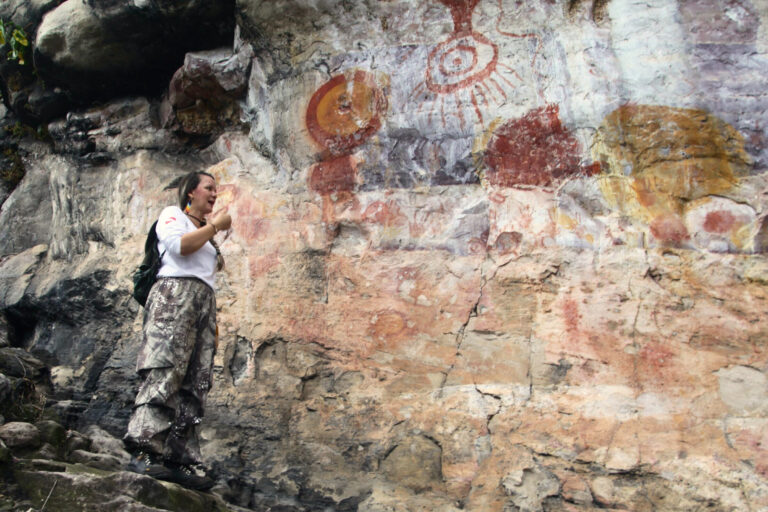- An oil spill was detected on November 13th on the Teles Pires River, a tributary of the Tapajós River, in a remote part of the Brazilian Amazon. The spill occurred near the under-construction São Manoel hydropower dam. The spill’s cause or extent is as yet unknown.
- Roughly 320 indigenous people were affected in villages near the dam site. Empresa de Energia São Manoel, the consortium building the dam, has sent more than 4,000 liters of fresh water to affected indigenous communities. IBAMA, Brazil’s environmental agency, is investigating.
- Indigenous leader Taravi Kayabi described the spill’s impact on his community: “All this is a terrible sadness for our people. This region is sacred to us. Now, along with the land being flooded [due to the dam], they´ve dirtied our water. The fish have disappeared, too. People are getting sick with diarrhea. Everyone is worried about their health.”
- The Teles Pires River already has three other dams, which have to date been subject to 24 lawsuits. Most of these cases focused on environmental impacts and violations of indigenous rights. The dams are part of the Tapajós Complex, a gigantic infrastructure project aimed at turning the Tapajós River and its tributaries into an industrial waterway for soy transport.

An oil spill was detected on the Teles Pires River, a major tributary of the Tapajós River in a remote part of the Amazon Basin on Sunday, November 13th. The spill occurred on the border between the Brazilian states of Pará and Mato Grosso. The São Manoel hydropower dam is being built at that location in the city of Jacareacanga.
Nearby indigenous villages have seen their water sources contaminated as a result of the spill. Brazil´s environmental agency, IBAMA, said that it can´t yet confirm that the substance that has polluted the river is oil, how much has been released, or the source of the spill.
Mongabay spoke with IBAMA’s environmental emergency coordinator, Fernanda Pirillo who said that the source was under investigation by IBAMA agents and that a formal report would be ready in roughly 10 days. In the meantime, she said, the agency is collecting information about the incident.
“During the first flyover [of the spill site], some oil was seen in the water,” Pirillo said. “On the 15th [the second flyover], no oil was seen … just muddy water that is appearing as a result of the work on the hydropower dam. We don’t know yet whether the oil came from the dam or from another source like the mining barges that are active in the region. This is under investigation.”

Pirillo went on to explain how the color of the oil suggested the amount. “The oil’s appearance, which was iridescent, suggests that there wasn’t a large amount. But we aren’t able to estimate the volume.” She told Mongabay that the oil was likely diesel or another fuel.
The São Manoel dam is being constructed by Empresa de Energia São Manoel — a joint venture between China Three Gorges, EDP Brasil, and Furnas. Construction on the dam is expected to be complete in 2018, and it will generate 700 megawatts (MW) of electricity. It is one of four dams on the Teles Pires River.
The consortium issued a statement declaring that the river basin has returned to normal and that it is analyzing the causes of the spill while it continues to monitor the problem. “Fulfilling the São Manoel hydropower dam´s social responsibility with people in the surrounding area, after the incident was identified, the nearest indigenous villages were contacted and are receiving the necessary support,” said the Empresa de Energia São Manoel statement.

Brent Millikan of International Rivers, an environmental NGO active in the region, said that a federal lawsuit was likely once Brazil’s Federal Public Ministry had enough information on what has happened. “IBAMA should also fine the responsible parties. The big thing is discovering exactly what happened,” said Millikan.
Pirillo confirmed that once the investigation is complete, IBAMA will apply whatever fines and other measures are appropriate.
According to a report from Estadão, roughly 320 indigenous people were affected in the villages near the dam site. Empresa de Energia São Manoel, which is building the dam, has sent more than 4,000 liters of water to affected indigenous communities.
Taravi Kayabi, an indigenous leader, described to Estadão the impact the spill has had on his community: “All this is a terrible sadness for our people. This region is sacred to us. Now, along with the land being flooded [due to the dam], they´ve dirtied our water. The fish have disappeared, too. People are getting sick with diarrhea. Everyone is worried about their health.”
Agencia Brasil reported Kayabi saying that the community has been unable to fish since the weekend of the spill.
Attorney Juliana da Paula Batista of the Instituto Socio-Ambiental, an NGO, lived and worked in the area near the São Manoel dam for three years. “These indigenous communities are near four dams, and they still don’t have electricity or treated drinking water,” she told Mongabay. The Estadão article estimated that 900 indigenous people live near the site of the São Manoel dam; another 10,000 Munduruku indigenous people live downstream from the spill.
Diego Paleci, an indigenous resident in the area, said via email that oil had reached the villages of São Benedito, Coelho, Tucumã, Lageirinho, Dinossauro Kururuzinho, Minhocuçu e Barro Vermelho
as well as Teles Pires, a Munduruku and Mairovi village. He also said that indigenous leaders had contacted the prospectors’ cooperative, which denied any accidents in the area.

Local villagers get their water directly from the river, said Batista, who described how construction of dams along the Teles Pires has compromised water quality. One visit to the community, she said, left her and her colleagues hospitalized due to drinking contaminated water. “There were significant fish kills even before the oil, and these communities depend on fish for their primary source of protein,“ she said.
“These communities have three sacred places in the world, without which, the world will end.” Two of these places, she noted, the Sete Quedas (Seven Falls) and Morro do Macaco (Monkey Hill), have already been destroyed by the Teles Pires dam and the São Manoel dam. “But since these places are not on indigenous land, these impacts have not been recognized” by Brazilian authorities, Batista affirmed.
“These communities are dealing with a series of [government and construction industry] violations on a daily basis with no mechanisms to guarantee a minimum level of compensation for these impacts that will allow them to continue living according to their culture,” she said.
The São Manoel dam is one of more than 40 dams the Brazilian government has planned for the Tapajós Basin as part of a massive industrial waterway project which would transport soy from Mato Grosso state down the Tele Pires, Tapajós and Amazon rivers to the Atlantic Ocean.

The Teles Pires River, which the São Manoel dam will block, already has three other existing dams built as part of the Tapajós Complex project. Prosecutor Marco Antonio Barbosa of the Federal Public Ministry in Mato Grosso said these dams have already been subject to 24 lawsuits. Most of those cases, Barbosa said, focus on environmental impacts and violations of indigenous rights. “There are various issues [in these cases including] the lack of environmental impact studies related to the impact on indigenous communities.”
“Coincidentally, [Empresa de Energia São Manoel] was removing a cofferdam, and soon after there was this news that there was an oil spill,” Barbosa told Mongabay. A cofferdam is a temporary enclosure built within or across a water body so that the water can be pumped out, and such structures are commonly used in dam construction. Barbosa said that impacts on the villages´ water from this operation were already foreseen, and that the company had already planned to supply drinking water.
Empresa de Energia São Manoel did not respond to Mongabay´s request for comment on this point.
On September 18th, the Federal Public Ministry asked the Federal Police to open an investigation into the spill.
According to a report from Radio Agencia Nacional, the Federal Public Ministry and the Secretary of Indigenous Health will be meeting on Tuesday, November 23rd, in Alta Floresta to discuss water quality with the region’s indigenous leaders.






